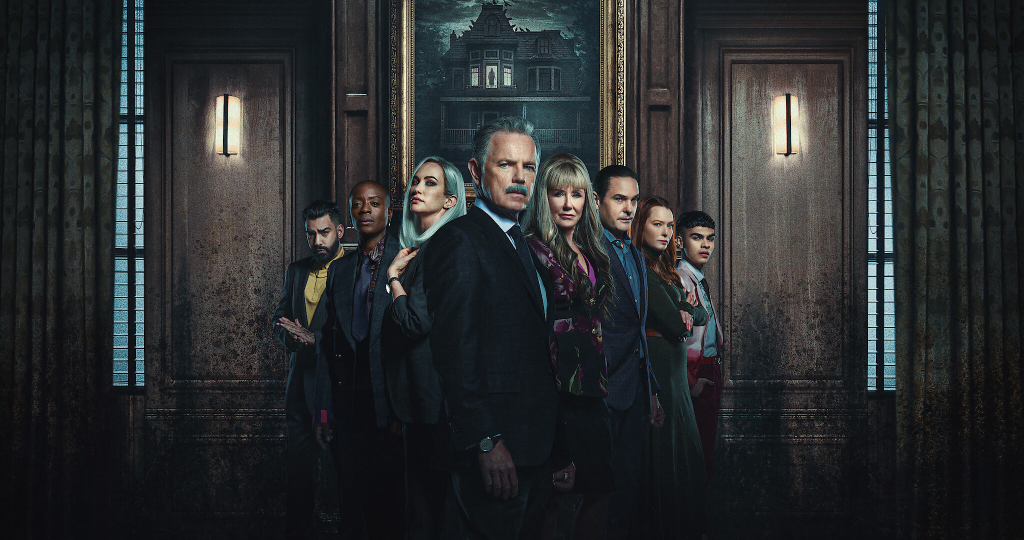Netflix has welcomed yet another gothic horror TV show onto its platform and has not disappointed. Since its release on Oct. 12, it remains on Netflix’s top 10 shows to watch right now.
“The Fall of the House of Usher” was created by Mike Flanagan. Flanagan is already known by horror enthusiasts for his shows “The Haunting of Hill House,” based on the novel by Shirley Jackson, and “The Haunting of Bly Manor,” which drew inspiration from the novel “The Turn of the Screw” by Henry James. Some more of his works include the movies “Doctor Sleep” and “Oujia: Origin of Evil,” but “The Fall of the House of Usher” may be his most elaborate work yet.
Several of the actors who participated in Flanagan’s previous projects also appear on the show, such as Carla Gugino who plays Verna and Henry Thomas who plays Frederick Usher, the eldest of Roderick’s children born from his first marriage.
Kate Siegel (Camille L’Espanaye), Rahul Kohli (Napoleon “Leo” Usher) and T’Nia Miller (Victorine LaFourcade) play three of Roderick’s illegitimate children, known as the “Bastards” to the family and the audience. The rest of the Usher children are played by newcomers Sauriyan Sapkota and Samantha Sloyan who play Prospero “Perry” Usher, the youngest of the “Bastard” children, and Tamerlane Usher, the second eldest and the only other child born from Roderick’s first marriage, respectively.
The cast also includes some well-known Hollywood actors such as Mark Hamill as Arthur Pym, Bruce Greenwood, who plays Roderick Usher and Mary McDonnell as Madeline Usher.
“The Fall of the House of Usher” follows a storyline based on many of Edgar Allan Poe’s notable short stories, and follows Roderick Usher as he explains to C. Auguste Dupin (Carl Lumbly) why all of the Usher children have been dying one after the other and why his pharmaceutical empire, Fortunato Pharmaceuticals, is on the brink of collapse.
“The Fall of the House of Usher” isn’t just one story — it’s multiple, and in true Flanagan fashion, they all connect in the end when all the gruesome details come to light. Following in the footsteps of “Hill House” and “Bly Manor,” each of the eight episodes in the series focuses on one character and their storylines to further understand the story as a whole. Each episode of the show is loosely based on a short story written by Poe, and the demise of each of the Usher children directly correlates to the demise of many of the characters in his short stories, such as “The Masque of the Red Death,” “The Tell-Tale Heart” and the notorious “The Pit and the Pendulum.”
As the Usher children begin to die in gruesome ways as the story progresses, the audience begins to understand the reasoning behind the deaths.
As in Flanagan’s previous works, the theme of the show is family, but while “Hill House” and “Bly Manor” focused on the positive influence family can have, “The Fall of the House of Usher” is a shining example of how family can be a person’s downfall. The phrase “sins of the father” echoes throughout the show, as the Usher children are dying not because of their actions, but because of their connection to their father and the family empire as well as the choices he made over 40 years ago.
The most notorious embodiment of Poe’s work on the show isn’t the children, but Gugino’s character, Verna. Verna, a cheeky reference to Poe’s poem “The Raven” and a clever anagram for the word “raven,” is the embodiment of immortality and death. She is what haunts each of the characters in the show as she slowly ticks each of the Usher children off her list, working to settle the deal that she made with the Usher twins years ago. However, she is not the evil character audiences think her to be.
The whole reason any of the tragedies that are occurring to the Usher family is not just a simple case of really bad luck, but the result of a “deal with the devil” kind of exchange. The Usher family was able to live as a powerful and rich family, but on the condition that the family must be willing to sacrifice anything that Verna wants in return for all that money and power.
Verna is not evil, as she doesn’t convince any of the characters to do what they choose to do or take the paths that they take. Rather, she is simply the catalyst and origin of each of their storylines. She even offers each of the characters a chance at redemption before they all die, but they all refuse, and that ultimately leads to each of their demise.
While the show does follow the blueprint from many of Poe’s classic works, it fails to achieve the same spunk that has allowed Poe’s works to last the test of time. “The Fall of the House of Usher” includes many jump scares, as the Usher children come back to haunt their father (Greenwood) sporadically throughout the story as he unveils the mystery behind their deaths to both Dupin (Lumbly) and the audience.
Nevertheless, the jump scares aren’t enough to keep the audience on edge. Flanagan attempts to achieve the same twisted and macabre aspects of horror found in Poe’s work in “House of Usher’ with varying degrees of success. The Usher Children die incredibly gruesome deaths in one episode, only for the next episode to be focused on their shameless and fairly questionable actions.
“The Fall of the House of Usher” may not be the most terrifying of Flanagan’s works, but it is thought-provoking and elaborate. Audiences who appreciate a classic horror mystery with a twist will certainly enjoy binge-watching the show this fall.



